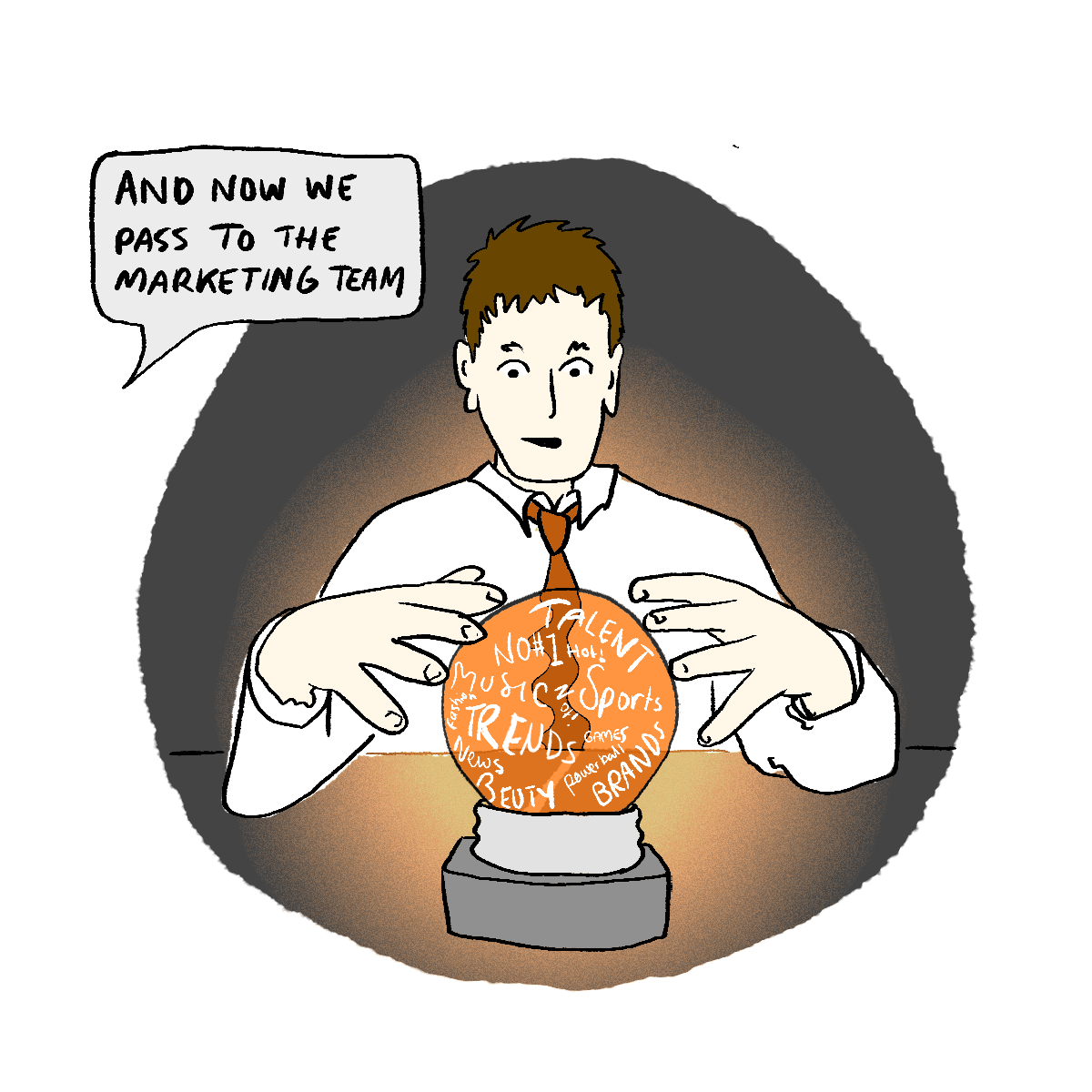The Mound - #44 Marketers or Fortune Tellers?
Welcome to The Mound, a weekly newsletter in which we at Good One Creative pitch— for free — our solutions to the world’s problems.
It’s late - almost midnight - when the doorbell rings...
Confused, you open it to find two men in suits who introduce themselves as representatives from Suttland & Associates. They want to speak with your son.
“My son? What do you want with him?”
“We’d like to discuss a business opportunity with him.”
“What sort of business do you have with a nine-year old?”
“It’s about his TikTok, sir.”
“Oh God... what’s he done?”
From down the hall, little Michael appears in his pyjamas. Clutching his toy bear, he rubs his eyes and he asks, “Daddy, what’s going on?”
“Go back to bed, boy! I’ll talk to you when I’m finished here!”
You turn back to the men.
“It’s not what he’s done, sir. It’s what he’s going to do. You see, earlier this evening Michael posted a series of videos about his teacher, Miss McGregor. According to our Marketing department’s ambassador-prospecting-framework, in a few years, your son’s profile - his content, influence, and his audience will align perfectly with our brand values.”
“You’re not saying…?”
“That’s right, sir. One day, your son will be an influencer—and we’d like to offer him five thousand dollars to someday post a video about our TAC Compensation Programme.”
One of the men hands you the contract, the other a pen - as, beneath your bathrobe, a single bead of sweat trickles down the small of your back. What do you do?
If a recent submission to the Journal of Marketing Research is anything to go by, you best prepare for the above scenario.
In the paper, Buying Future Endorsements from Prospective Influencers on User-Generated Content Platforms, Andreas Lanz and his colleagues construct a framework to do just that: identify which few in a crowd of potential-pushers will go on to become creators-of-note. Armed with such foresight, brands could then approach these unknowns and lock them into sponsorship deals for less money than if they waited until the influencers became… influential.
I don’t quite understand what the authors mean by any of the equations they utilise in the paper, or what they’re saying when they claim to “extract around 20% of the profit potential” from the prospective influencers (and whether that’s before or after the mathematicians’ fees?). But I do know how they’re going to sell it:
They’re going to say we’re bad at our jobs until we buy it. They’re going to both perpetuate the myth that everyone hates the marketing department and ensure the myth’s future by getting us all to spend the next three months arguing about the delta of prospective v. non-prospective media purchases instead of actually doing our jobs.
And then it won’t be too long before either Google or Microsoft or HubSpot or Salesforce acquires the algorithm and folds it into some niche, mid-tier package offering - probably just in time for 150,000 marketers with young children to leave their stable jobs so they can take a punt on their future endorsement talent agencies, flooding the market with a service that no one really understands.
So - to go back to our scenario - what will you do when Suttland & Associates come knocking?
Well, in all likelihood, you’ll pull your phone from the pocket of your bathrobe and give me a call:
“Freddie? Yeah, it’s Ray… Suttland & Associates... Five thousand… No, I don’t think so… Two of ‘em… Alright… Thanks... Yep, bye now."
You'll then look to lawyers with a feigned disappointment, your hand already on the door.
"Sorry, gents. Michael’s just inked a deal for Sotheby & Partners. Something about a... footpath accident... regime, maybe. But we appreciate the offer.”
Then you’ll softly shut the door, head back to bed, and you're gonna sleep like a fucking baby.

